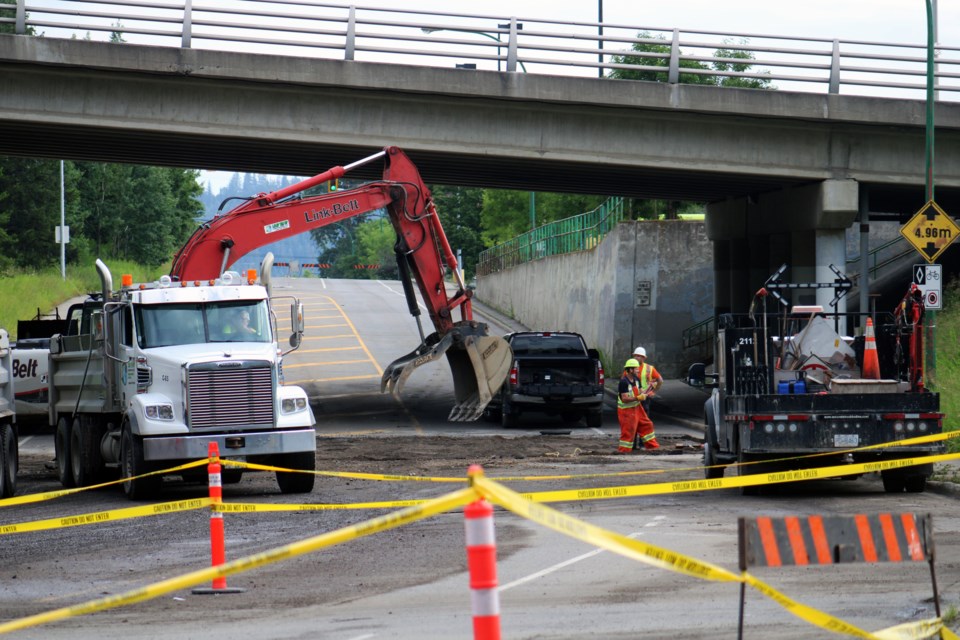We shouldn't have to wait for a major rain event to strike Prince George before finally making a serious investment in preventing it from happening again.
There are serious issues with stormwater management in PG. As in, there isn't much of it. There have been studies and reports, but little has been done. That may be changing, though. Right now, the city is asking for public input on the four options being considered for creating a dedicated storm management fund. An online survey asks voters to choose between (1) a dedicated tax levy, (2) a tiered flat rate based on property type (commercial, residential) and size, (3) an equivalent residential unit (ERU) that calculates the allowed hard surface based on zoning’s maximum site coverage and (4) an ERU based on statistical sampling, which would calculate an average and set a base billing rate on that.
Prince George has seen serious flooding before, most recently in July 2022 when a major storm hit and overwhelmed the storm drain system. Some areas of town, including downtown and the light industrial area around the Queensway, saw the drains overflow and a flood of water and mud pour in. Damage, which included a large pothole on Winnipeg street, was extensive.
Once an approach is determined and funding is in place, the city can tackle flood prevention.
One solution could see the construction of stormwater retention ponds. These are designed to slow the flow of creeks, particularly during snowmelt and major rainstorms, by collecting and holding excess water. It's a simple, but costly, approach. Building them here would be a step toward eliminating the risk of flooding for much of the area.
This would be a major project, costing millions that some of our councillors may tell you we don't have, or if we do, we shouldn't spend it on preventing something that may not happen for years, or even decades. “It was a lot of water very fast and you don’t really build storm systems for the once a year when you get a half an hour of rain,” city communications manager Julie Rogers said after the 2022 floods.
That's a mistake. We can't wait for a reason to justify spending money to protect people, pets and property.
Consider the aftermath of the 2004 floods in Peterborough, Ont. That disaster made national news for days as the river city – located in a bowl like Prince George and about the same size – was flooded during a 190-mm July rainstorm and saw $129 million in damage as its drainage systems were overwhelmed.
Peterborough took immediate steps to address the issues that had led to floods over the years, using millions in federal and provincial disaster relief funds to upgrade its drainpipes and to design and build mitigation infrastructure, including floodwater retention ponds at key locations.
The same solution to flood management can, and must, happen here, but it shouldn't take another disaster to make it a priority. With the survey offering four options available to fund a solution, we suggest option 2, a tiered flat rate based on property size. It sets the funding up as a utility, which keeps the funds dedicated to their intended use, protects homes and businesses and makes sure heavy industry pays its fair share.
We know climate change is real, and it's happening now. Ignoring it, hoping it's just a “natural pattern of weather,” is naive and puts our community at risk. Take the stormwater survey, have your say, and let our elected officials know that we expect action before disaster, not the other way around.



